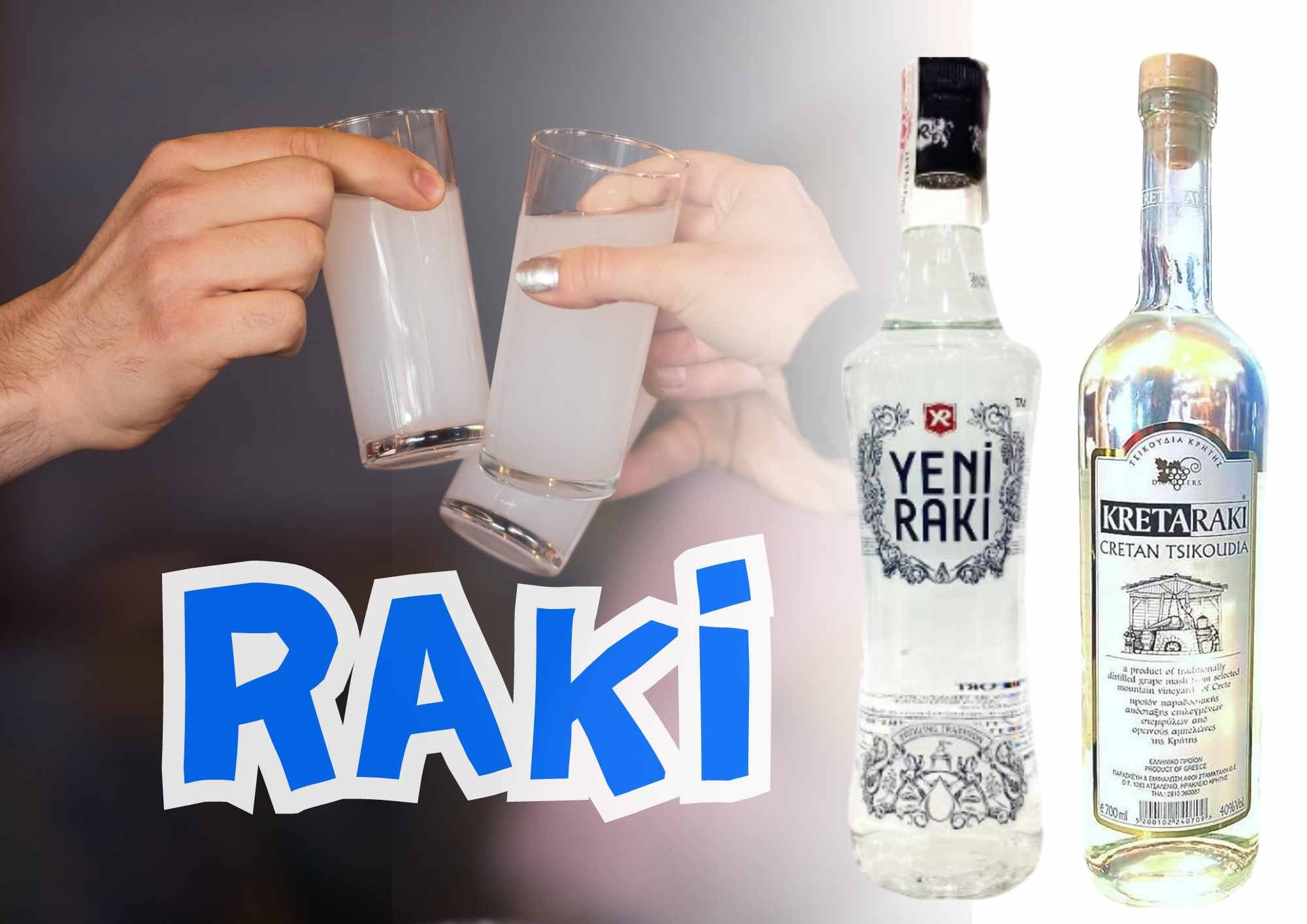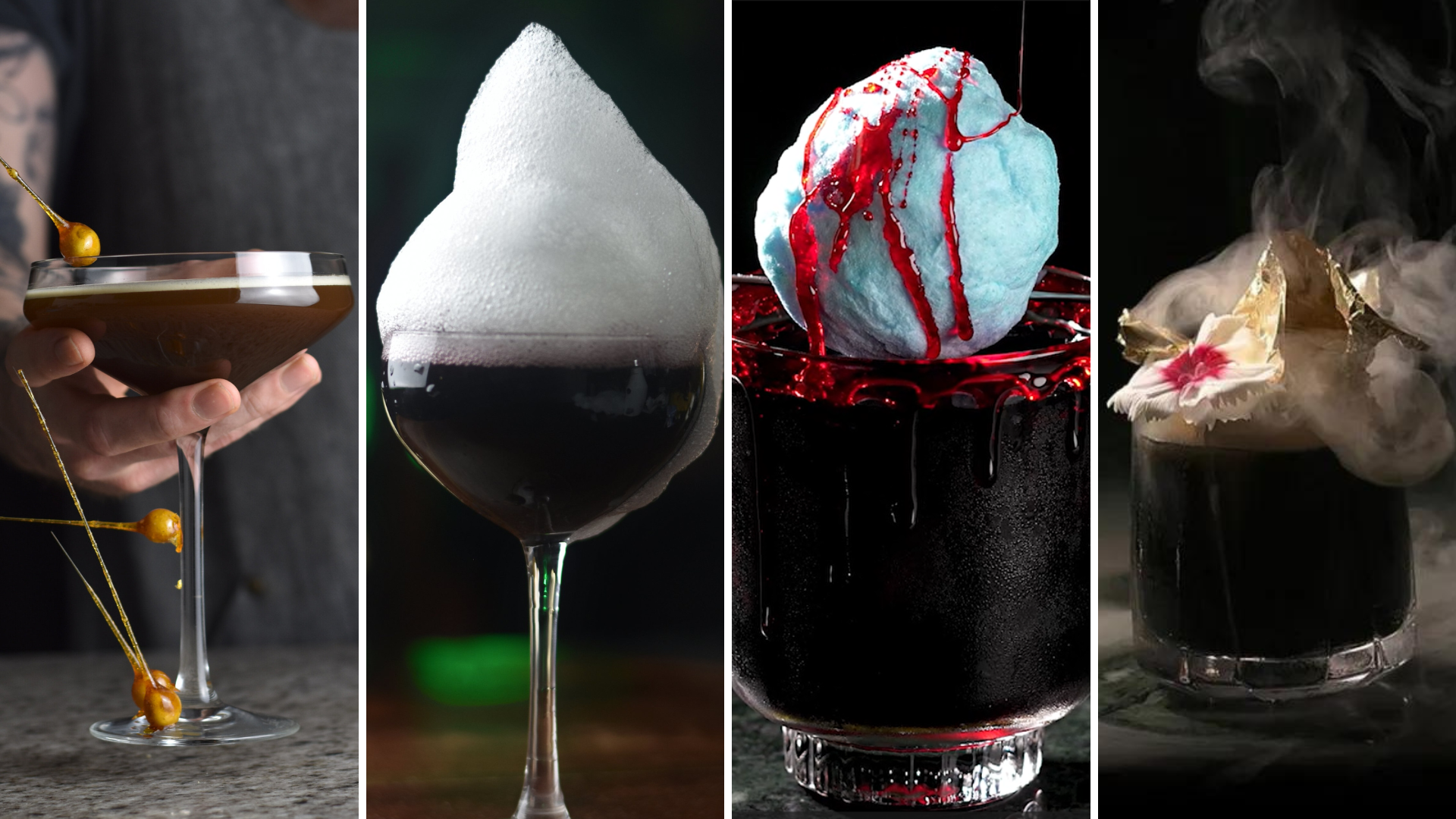What Is Aquavit? The Ultimate Guide
Old bottles of aquavit - Image source
Aquavit, the Nordic spirit slowly gaining popularity through the UK and Globally. From our drink cabinets to our cocktails. Which begs the question - what exactly is this Scandinavian spirit? How is it made? Where does it come from? Well in this ultimate guide to aquavit, we will answer all your burning aquavit questions.
You can use the below table of contents to jump ahead to parts of this “Ultimate aquavit guide” to find out exactly what is aquavit and answer the most asked aquavit questions.
What is Aquavit?
Skál! That’s Nordic for, cheers! Anyway. Aquavit, also known as aquavite, akvavit or akevitt. We are hearing more and more about it. So what the hell is it?
Aquavit is a Scandinavian spirit distilled from potatoes and grains. It’s then flavoured with different botanical’s. Much like gin but at the same time, much different. Aquavit is the national spirit of Sweden, Norway and Denmark.
Scandinavian inspired drinks, cuisine and decor is something that’s growing in popularity within the UK bar and restaurant scene. Scandinavian interiors characterised by simplicity, minimalism and functionality have slowly been taking over our bars and restaurants. I can completely understand why. Scandinavian decor is very relaxing and is simple enough to draw focus on the food or drinks served in a restaurant rather then the decor.
With Scandinavian design becoming more popular within our food and drinks scene, so does Scandinavian cuisine. Pickled ingredients, and ingredients like dill, lingonberries and cloudberries have been creeping into new menus across the world and outside of scandi countries. With that, comes aquavit.
In fact, I reckon that by next year, Aquavit is going to be the next global trendy spirit. You heard it here first. So we best start brushing up on our knowledge shouldn’t we?
I used to work managing the bar at a Scandinavian restaurant and bar in Manchester. That’s where I got my first taste of aquavit. Prior to that, I had heard of aquavit and even had a little taste. But I didn’t really drink it or know anything about it. Till my Fika days that is (Fika was the name of the Scandinavian restaurant and bar I managed).
Before that, I always thought Scandinavia had really good design, I mean who doesn’t love Ikea? and I knew they had good food, pickles, dill, fish and all that. However, I thought they slacked in Spirit and drinks culture. Boy was I wrong. Once I tried aquavit, my eyes and palette was opened to Nordic drinks culture.
Scandinavian map.
What’s in a name
Aquavit, also spelled aquavite, or akvavit, also called snaps. Has many different spellings depending on what country makes it. Below are a few more;
Danish: Akvavit
Finnish: Akvaviitti
Icelandic: Ákavíti
Norwegian: Akevitt
Swedish: Akvavit
like many spirits, aquavit gets its name from the Latin aqua vitae, Meaning “Water of life”. Almost every country has its version of the spirit with a name derived from the Latin aqua vitae. Even whisky gets its name from the Gaelic for “water of life.”
What does Aquavit taste like?
Aquavit is much like gin. However, instead of a predominant flavour of juniper, Aquavit has a dominant flavour of caraway. Essentially, making aquavit a heavily spiced flavoured vodka. In short, a good word to sum up the taste of Aquavit is “Savoury”
Think vodka, that tastes heavily herbaceous and spicy. Almost like the taste of rye bread. That’s what Aquavit tastes like. However, there are different styles of Aquavit, meaning the flavours and characteristics can change dramatically from style to style.
Un-aged Aquavit tends to taste more herbaceous, while barrel aged Aquavit has a sweetness and nuttiness flavour to it.
The history of Aquavit
Shipping aquavit photo Image source
Early days
In the early days. 15th century early days. Aqua vitae (Water of Life) as mentioned above, was a basic distilled spirit where most of today’s spirits originate from, including Gin and whisky. Almost every country had a version of Aqua vitae in some form or another.
A basic distilled spirit valued for its health promoting properties and medical uses. Aqua vitae was known to cure just about any ailment. A cure all, magical spirit, drank to keep you living forever. The fountain of youth in a bottle.
Most countries adapted and changed this spirit, from what they used to distil it, to what they added afterwards to flavour it. The Scandinavians added caraway. Along with other spices and herbs to help mask the harsh flavour from the alcohol. Herbs and spices such as: anise, fennel, cumin, dill and coriander.
The precise ingredients vary from each Scandinavian country. Norway, Denmark and Sweden all have their unique ways of flavouring aquavit, but they all have that underline spicy, herbaceous flavour.
1500’s
Aquavit was first recorded 1531. In a letter was sent from the Danish Lord Eske Bille of Bergenhus castle, to the Norwegian bishop Olav Engelbrektsson. With the letter, Bille sent a spiced liquor that he promised would cure any illness known to man.
Steeping herbs, spices and other flavourings in alcohol has long been a tradition in the Nordic countries. They have been doing it for hundreds of years. The spice and herb mix that makes up the flavour known as “aquavit” has been the most popular of these spirit maceration and distillates.
However, as you can imagine. The recipe varies a lot. Not just from country to country but from household to household. So pinning down an exact follow along recipe for aquavit is difficult.
1800’s
in 1846 caraway became the overpowering flavour of Aquavit and the defining flavour.
In the 19th century, distilling techniques were further refined. Before this time, Aquavit was most likely made by macerating grain spirit with herbs and spices. After this time, Aquavit was most popularly made by macerating the selected herbs and spices in alcohol, which was then distilled and further blended with alcohol and pure water. Making for a crisper flavour to the drink.
Barrel ageing aquavit dates way back to 1806. As the story goes, a merchant captain sailed from Norway to Indonesia with barrels of aquavit. Arriving at the ship's destination, the aquavit did not sell. So, the filled barrels were brought back to Norway. Upon the return, it was found that the aquavit had transformed into an amber-coloured, mellow liquor. Sweeter and more flavoursome than the freshly distilled alcohol. With that, barrel ageing aquavit was born.
How Aquavit is made
Much like Vodka, Aquavit is made by distilling grains or vodka into a clear, flavourless neutral spirit. Ingredients, mainly caraway and an array of other spices and herbs are then added to that neutral spirit. Which is then re-distilled and diluted with water to reach the much more palatable alcohol percentage of a minimum 37.5% and up to 45%.
The end aquavit can then be bottle clear, or further refined through maturing and ageing.
Barrel ageing Aquavit is a popular technique. Ageing can be done in an array of barrels and casks, from Oak to used sherry casks. A well known brand of Aquavit “Linie" Matures its Aquavit at sea. Travelling for 19 weeks from Norway to Australia. A reflection of how barrel ageing started with aquavit in 1805, when a merchant travelled from Norway to Indonesia with barrels of aquavit and discovered barrel ageing. As mentioned above, in the history of aquavit.
Barrels of aquavit photo Image source
About Caraway
You probably most recognise caraway seeds from rye bread. Caraway has a flavour that’s a cross between cumin and fennel with hints of anise. It’s a herb relative to parsley and coriander.
Caraway seeds photo
Enjoying this ultimate guide on aquavit? Try some of my other guides below
Styles of Aquavit
Photo of aquavit styles line-up
Danish aquavit
Danish aquavit is a lot rougher on the palette then other styles. Due to the fact neither the aquavit distillates nor the liquid are matured. They tend to have a stronger dill and coriander flavour. It works great in cocktails to add a bit of spice and complexity.
A good use in cocktails is to take a gin cocktail, such as a Tom Collins or Negroni and add about 10ml, just a dash of Danish aquavit. You’ll be able to pick up on the flavour straight away, adding that layer of complexity to the drink.
A drink I used to make for people who love the taste of gin and want to get into aquavit is a gin martini, but with an aquavit wash in the martini glass.
Swedish aquavit
Swedish aquavit is grain-based and often has a noticeable anise and fennel flavour. It’s the perfect aquavit for a new comer to aquavit drinking. It’s generally a lot smoother in taste. Perfect for drinking straight and familiarising yourself with the flavour of caraway and more importantly, aquavit.
Norwegian aquavit
Norwegian aquavit is made from potatoes and has more of a cumin and citrus flavour. Ageing in sherry casks not only mellows the aquavit for smooth drinking, but also imparts a woody, vanilla characteristics.
They are usually matured for at least 6 months in sherry casks, which gives Norwegian aquavit a smoother finish to the taste. Perfect in citrusy gin cocktails made by substituting the gin for Norwegian aquavit. Try mixing it with tonic for a fresh, earthier, spicier twist on a gin and tonic.
Taffel Aquavit
“Taffel” means “table". It’s a clear expression of aquavit .
How to drink Aquavit
Aquavit, is a big part of the Nordic, Scandinavian drinking culture. Because of the culture behind the drink, it’s traditionally drunk at special events. Think Christmas, birthdays and celebrations.
Usually, its enjoyed straight. In Sweden and Denmark, aquavit would be served ice cold, in shot glasses and drank quickly. Norway tends to differ from this in three ways. In Norway, instead of served ice cold, aquavit would be served at room temperature in special tulip-shaped glasses, such as grappa glasses and sipped slowly.
Of course, mixologists from across the globe have taken aquavit, mixed, blended and balanced it in an array of cocktails. Which is how we often see it here in the UK, blended into our cocktail culture.
Photo of a traditional aquavit drinking glass
Using Aquavit in cocktails
Using aquavit in cocktail’s when done wrong, can become very overpowering. However, when done right, is damn right delicious. A good starting point for mixing aquavit is to substitute gin and vodka cocktails with it. A little can go a long way depending on the type of aquavit you use. So, a good starting point would be not to substitute vodka or gin completely, but instead, take a little out and add a little aquavit. Taste, and see where you can go with it.
Try mixing carrots with aquavit. With carrot being a close relative to caraway, it makes them an unusual but delicious pair. A good place to start is carrot juice mixed with orange juice and aquavit. Like my above photo.
Three of my best aquavit cocktail creations to try
Back when I worked managing the bar at a Manchester Scandinavian restaurant (before it unfortunately closed down) I spent a lot of time messing around with aquavit. Creating cocktails, infusions and liqueurs. I loved it.
Using things like homemade lingonberry jam to make aquavit and lingonberry cosmopolitans. Using homemade dill and herb syrups to mix with aquavit and tonics. I gained quite a fair understanding of what worked well with aquavit and what didn’t. Below are three of the cocktails I would make that showed of the three different styles of aquavit in their best light.
Gin Martini
As I touched on above, back when I worked in a Scandinavian restaurant, I would make a martini that had just a touch, an essence if you will of Danish aquavit. I would make a gin martini, 50ml of dry gin, 10ml dry vermouth as normal. But before pouring into my martini glass, i would pour a helping of aquavit in the glass, swill it round then pour it out.
It gave my martini’s what i’d call a “Nordic complexity” the taste would be subtle on the palette but pronounced on the aroma.
Aquavit Collins
Another favourite of mine was to take a smoother expression of aquavit, such as a Norwegian style and mix it with Cointreau, lemon juice, sugar and soda. Garnished with a sprig of dill and orange peel.
40ml Norwegian Aquavit
20ml Cointreau
20ml Fresh Lemon juice
15ml Sugar Syrup
Top with soda
Glassware: Collins
Garnish: Sprig of dill, orange peel
Nordic Bloody Mary
Aquavit pairs beautifully with savoury drinks. So cocktails like Bloody Mary’s work wonders.
45ml Swedish Aquavit
125ml tomato juice
10ml lemon juice
1 dash Worcestershire sauce
Pinch celery salt
Pinch ground pepper
Hot sauce (to taste)
Garnish: Pickle spear
Recommended Aquavit to try
Linie Aquavit
Linie aquavit photo
A Norwegian aquavit aged at sea. Linie is taken in sherry casks for a four month sailing trip from Norway to Australia, then back again before bottling. This results in many changes of temperature, speeding up the maturation and giving a nod to aquavit ageing tradition.
Full history, product information and where to buy can be found on their official website here.
Aalborg Jubiläums Akvavit
Aalborg Jubilaums akvavit photo
This Aquavit won Gold at the 2001 International Wine and Spirit Competition. It hails from Aalborg and was first created in 1946 to celebrate the centenary of their Taffel Akvavit. Jubiläums is flavoured with dill and coriander.
Full history and product information can be found on their official website here.
Aalborg Taffel Akvavit
Aalborg taffel akvavit photo
Coming from the same producers of Aalborg jubilaums, Taffel, is a classic Aquavit, released in 1846 and was heralded as Best Aquavit in the World at the 2002 International Wine and Spirit Competition.
Full product information can be found here.
O.P. Anderson
O.P. Anderson aquavit photo
Hailing from Sweden and aged in oak barrels for 8 months. OP Anderson was founded in 1891 by Carl August Anderson, who named his brand after his father. Today, OP Anderson is one of Sweden’s most popular akvavits and can be easily found throughout the country.
For more on O.P. Anderson aquavit and where to buy, check out their official website here.
Brennivín
Brennivin aquavit photo
Brennivín is an Icelandic aquavit. Affectionately known as the "Black Death" due to its stark black label aswell as its impact on those unaccustomed to it. Brennivín is Iceland’s most famous akvavit. It was introduced just after the partial repeal of the country’s prohibition.
For more information on Brennivin and where to buy, check out their official website here.
So their you have it. All your aquavit questions answered in one compact, ultimate aquavit guide. If you do have any questions unanswered, feel free to comment below or send me an email at hello@smartblend.co.uk I’d be happy to connect and help where i can.
To share this guide, you can use the below buttons. Thank you and Skál!

























